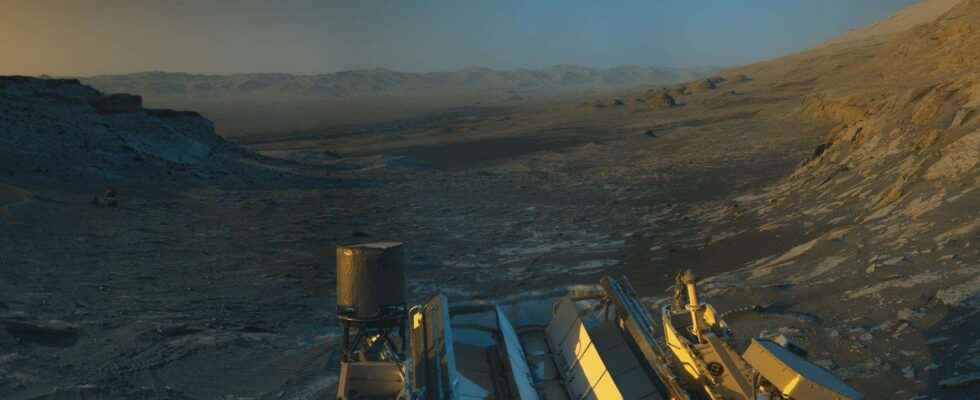Carbon is at the heart of life. But not only… So when astronomers get their hands on a rather special form of carbon than the planet Mars, they consider that it could have been produced by life. But not only…
You will also be interested
[EN VIDÉO] Curiosity: a year on Mars in two minutes Discover in this timelapse a year of Martian exploration in two minutes. Curiosity is at work: the rover rolls, digs… © NASA/JPL
It has now been almost 10 years since Curiosity travels the Gale crater. Ten years that the NASA rover returns to the astronomers data that helps them to reconstruct little by little the history of the planet Mars. And today, researchers report having discovered, in samples of Martian soil, a disturbing signature. The type of signature that, on our good old Earth, is associated… with biological processes!
Does this mean that astronomers have finally got their hands on the Grail? That they discovered evidence of the existence of forms of extraterrestrial life ? Let’s not go too fast. Because even if the researchers qualify their observations as“extremely interesting”, they also already have in mind other plausible processes to explain them. Scenarios “unconventional”, certainly, but which will have to be explored before being able to conclude.
But what did they really discover? Rocks with isotope compositions of carbon surprising. Remember that carbon has two stable isotopes. Carbon-12 and carbon-13. And since the former reacts faster than the latter, an analysis of their relative amounts in a sample gives useful information to researchers. In the sedimentary rocks analyzed by Curiosity, they found samples particularly rich in carbon 13 and others surprisingly poor in carbon 13.
Galactic cloud or ultraviolet
On Earth, the sediment also low in carbon 13 are those that have been exposed to biological activity. A microbial mat consuming methane (CH4), for example. But the researchers cannot for the moment affirm that the same type of process took place on Mars. The presence of rocks depleted in carbon 13 could as well be due to the passage of our Solar system in one cloud galactic molecule — it seems to happen about every 200 million years — or to a breakdown of the carbon dioxide (C02) by radiation ultraviolet(UV).
Is the first scenario possible? For this, the astronomers report that it would have been necessary for the galactic cloud in question to have first caused a drop in temperature on Mars. In order to form glaciers. On which dust could have settled and remained once the ice had melted. Leaving behind a layer of carbon-13-poor sediments. But so far, there is only extremely limited evidence of the presence of glaciers in the past of the Gale crater.
Is the UV track more promising? Here again, nothing really allows us to conclude for the moment. Studies show that ultraviolet radiation can transform CO2 into organic compounds of the formaldehyde type. But researchers will need more experimental results to be sure.
A biological signature?
With all the necessary precautions matter , astronomers are also considering a scenario that would put extraterrestrial biological processes at the center of the story. Inspired by those who are known on Earth. From bacteria surface that would have produced a unique carbon signature by releasing methane into theatmosphere martian. UV radiation would then have converted it into molecules larger and more complex that would have eventually rained down on the surface and could now be preserved with their distinct carbon signature in Martian rocks.
“On Earth, the processes that would produce the carbon signal we detected are biological, confirms Christopher House, researcher at the Pennsylvania State University (United States). We need to understand if the same explanation works for Mars.” Because the Red Planet is very different from ours. Smaller, colder, with weaker gravity and a different starting isotopic mixture than Earth. “On our planet, there is life everywhere we look. And it influences the carbon cycle. Preventing us from studying what it could be in the absence of life. »
Astronomers are now waiting to find out if Curiosity will find similar signatures at other sites. They also hope to be able to analyze the carbon content of a panache of methanereleased by the surface like the one crossed by chance by the rover in 2019. A content which could validate or not, the hypothesis involving microorganisms.
Interested in what you just read?
